- Home
- Peter Ackroyd
London: The Biography Page 3
London: The Biography Read online
Page 3
It has been suggested that the London area was controlled from three sacred mounds; they are named as Penton Hill, Tothill and the White Mound, otherwise known as Tower Hill. Any such theory can readily be dismissed as nonsense, but there are curious parallels and coincidences which render it more interesting than the usual fantasies of latter-day psychogeographers.
It is known that in prehistoric worship a holy place was marked by a spring, a grove and a well or ritual shaft.
There is a reference to a “shrubby maze” in the pleasure gardens of White Conduit House, situated on the high ground of Pentonville, and a maze’s avatar was a sacred hill or grove. Close at hand is the famous well of Sadlers Wells. In recent days the water of this well flowed under the orchestra pit of the theatre but, from medieval times, it was considered holy and was tended by the priests of Clerkenwell. The site of the high ground in Pentonville was also once a reservoir; it was until recently the headquarters of the London Water Board.
Another maze was to be found in the area once known as Tothill Fields in Westminster; it is depicted in Hollar’s view of the area in the mid-seventeenth century. Here also is a sacred spring, deriving from the “holy well” in Dean’s Yard, Westminster. A fair, similar to the pleasure gardens upon White Conduit Fields, was established here at an early date; the first extant reference is dated 1257.
The sites are, therefore, comparable. There are other suggestive coincidences. On old maps, “St. Hermit’s Hill” is a noticeable feature of the area beside Tothill Fields. To this day, there is a Hermes Street at the top of the Pentonville Road. It is perhaps also interesting that in a house on this site dwelled a physician who promoted a medicine known as the “Balsam of Life”; the house was later turned into an observatory.
On Tower Hill there was a spring of clear bubbling water, reputed to possess curative properties. A medieval well exists there, and traces of a Late Iron Age burial have been uncovered. There is no maze but the place has its own share of Celtic legends; according to the Welsh Triads the guardian head of Bran the Blessed is interred within the White Hill to safeguard the kingdom from its enemies. London’s legendary founder Brutus, also, was supposed to have been buried on Tower Hill, in sacred ground that was used as an observatory until the seventeenth century.
The etymology of Penton Hill and Tothill is reasonably certain. Pen is the Celtic signifier for head or hill, while ton is a variant of tor/tot/ twt/too, which means spring or rising ground. (Wycliffe applies the words tot or tote, for example, to Mount Zion.) Those of a more romantic disposition have suggested that tot is derived from the Egyptian god Thoth who is of course reincarnated in Hermes, the Greek personification of the wind or the music of the lyre.
Here, then, is the hypothesis: London mounds, which bear so many similar characteristics, are in fact the holy sites of Druid ritual. The maze is the sacred equivalent of the oak grove, while the wells and springs represent the worship of the god of the water. The London Water Board was, then, well situated. Pleasure gardens and fairs are more recent versions of those prehistoric festivals or meetings which were held upon the same ground. So antiquaries have named Tothill, Penton and Tower Hill as the holy places of London.
It is generally assumed, of course, that Pentonville is named after an eighteenth-century speculator, Henry Penton, who developed the area. Can one place assume different identities, existing in different times and in different visions of reality? Is it possible that both explanations of Pentonville are true simultaneously? Might Billingsgate be named after the Celtic king Belinus or Belin, as the great sixteenth-century antiquary John Stow would have it, or after a Mr. Beling, who once owned the land? Can Ludgate really bear the name of Lud, a Celtic god of the waters? Certainly there is room for contemplation here.
It is equally important to look for evidence of continuity. It is likely that there was antiquity of worship among the Britons long before the Druids emerged as the high priests of their culture, and in turn Celtic forms of ritual seem to have survived the Roman occupation and subsequent invasions by the Saxon tribes. In the records of St. Paul’s Cathedral the adjacent buildings are known as “Camera Dianae.” A fifteenth-century chronicler recalled a time when “London worships Diana,” the goddess of the hunt, which is at least one explanation for the strange annual ceremony that took place at St. Paul’s as late as the sixteenth century. There, in the Christian temple erected on the sacred site of Ludgate Hill, a stag’s head was impaled upon a spear and carried about the church; it was then received upon the steps of the church by priests wearing garlands of flowers upon their heads. So the pagan customs of London survived into recorded history, just as a latent paganism survived among the citizens themselves.
One other inheritance from prehistoric worship may also be considered. The sense of certain places as being powerful or venerable was taken over by the Christians in the recognition of “holy wells” and in such ceremonies of territorial piety as “beating the bounds.” Yet the same sensibility is to be found in the writings of the great London visionaries, from William Blake to Arthur Machen, writings in which the city itself is considered to be a sacred place with its own joyful and sorrowful mysteries.
In this Celtic period, which lurks like some chimera in the shadows of the known world, the great legends of London find their origin. The historical record knows only of warring tribes within a highly organised culture of some sophistication. They were not necessarily savage, in other words, and the Greek geographer Strabo describes one Briton, an ambassador, as well dressed, intelligent and agreeable. He spoke Greek with such fluency that “you would have thought he had been bred up in the lyceum.” This is the proper context for those narratives in which London is accorded the status of a principal city. Brutus, in legend the founder of the city, was buried within London’s walls. Locrinus kept his lover, Estrildis, in a secret chamber beneath the ground. Bladud, who practised sorcery, constructed a pair of wings with which to fly through the air of London; yet he fell against the roof of the Temple of Apollo situated in the very heart of the city, perhaps on Ludgate Hill itself. Another king, Dunvallo, who formulated the ancient laws of sanctuary, was buried beside a London temple. From this period, too, came the narratives of Lear and of Cymbeline. More powerful still is the legend of the giant Gremagot who by some strange alchemy was transformed into the twins Gog and Magog, who became tutelary spirits of London. It has often been suggested that each of this characteristically ferocious pair, whose statues have stood for many centuries within the Guildhall, guards one of the twin hills of London.
Such stories are recorded by John Milton in The History of Britain, published a little more than three hundred years ago. “After this, Brutus in a chosen place builds Troia nova, chang’d in time to Trinovantum, now London: and began to enact Laws; Heli beeing then high Priest in Judaea: and having govern’d the whole Ile 24 Years, dy’d, and was buried in his new Troy.” Brutus was the great-grandson of Aeneas who, some years after the fall of Troy, led the exodus of Trojans from Greece; in the course of his exilic wanderings he was granted a dream in which the goddess Diana spoke words of prophecy to him: an island far to the west, beyond the realm of Gaul, “fitts thy people”; you are to sail there, Brutus, and establish a city which will become another Troy. “And Kings be born of thee, whose dredded might shall aw the World, and Conquer Nations bold.” London is to maintain a world empire but, like ancient Troy, it may suffer some perilous burning. It is interesting that paintings of London’s Great Fire in 1666 make specific allusion to the fall of Troy. This is indeed the central myth of London’s origin which can be found in the sixth-century verses of “Tallisen,” where the British are celebrated as the living remnant of Troy, as well as in the later poetry of Edmund Spenser and of Alexander Pope. Pope, born in Plough Court beside Lombard Street, was of course invoking a visionary urban civilisation; yet it is one highly appropriate for a city first vouchsafed to Brutus in a dream.
The narrative of Brutus has been dismissed as
mere fable and fanciful legend but, as Milton wrote in the judicious introduction to his own history, “oft-times relations heertofore accounted fabulous have bin after found to contain in them many foot-steps, and reliques of something true.” Some scholars believe that we can date the wanderings of the apparently legendary Brutus to the period around 1100 BC. In contemporary historiographical terms this marks the period of the Late Bronze Age when new bands or tribes of settlers occupied the area around London; they constructed large defensive enclosures and maintained an heroic life of mead-halls, ring-giving and furious fighting which found expression in later legends. Segmented glass beads, like those of Troy, have been discovered in England. In the waters of the Thames was found a black two-handled cup; its provenance lies in Asia Minor, with an approximate date of 900 BC. So there is some indication of trade between western Europe and the eastern Mediterranean, and there is every reason to suppose that Phrygian or later Phoenician merchants reached the shores of Albion and sailed into the market of London.
Material evidence of an association with Troy itself, and with the region of Asia Minor in which that ancient doomed city resided, can be found elsewhere. Diogenes Laertius identified the Celts with the Chaldees of Assyria; indeed the famous British motif comprising the lion and the unicorn may be of Chaldean origin. Caesar noted, with some surprise, that the Druids made use of Greek letters. In the Welsh Triads there is a description of an invading tribe who have travelled to the shores of Albion, or England, from the region of Constantinople. It is suggestive, perhaps, that the Franks and Gauls also claimed Trojan ancestry. Although it is not altogether out of the question that a tribe from the region of fallen Troy migrated to western Europe, it is more likely, perhaps, that the Celtic people themselves had their origins in the eastern Mediterranean. The legend of London, as a new Troy, is therefore still able to claim some adherents.
At the beginning of any civilisation there are fables and legends; only at the end are they proved to be accurate.
One token of Brutus and his Trojan fleet may still remain. If you walk east down Cannon Street, on the other side from the railway station, you will find an iron grille set within the Bank of China. It protects a niche upon which has been placed a stone roughly two feet in height, bearing a faint groove mark upon its top. This is London Stone. For many centuries it was popularly believed to be the stone of Brutus, brought by him as a deity. “So long as the stone of Brutus is safe,” ran one city proverb, “so long shall London flourish.” Certainly the stone is of great antiquity; the first reference to it was discovered by John Stow in a “fair written Gospel book” once belonging to Ethelstone, an early tenth-century king of the West Saxons, where certain lands and rents are “described to lie near unto London stone.” According to the Victorian County History it originally marked the very centre of the old city, but in 1742 was taken from the middle of Cannon Street and placed within the fabric of St. Swithin’s Church opposite. There it remained until the Second World War; although a German bomb entirely destroyed the church in 1941, London Stone remained intact. It is constructed of oolite which, as a perishable stone, cannot be assumed to have survived since prehistoric times. Yet it has been granted a charmed life.
There is a verse by the fifteenth-century poet, Fabyan, which celebrates the religious significance of a stone so pure that “though some have it thrette … Yet hurte had none.” Its actual significance, however, remains unclear. Some antiquaries have considered it to be a token of civic assembly, connected with the repayment of debts, while others believe it to be a Roman milliarium or milestone. Christopher Wren argued, however, that it possessed too large a foundation for the latter purpose. A judicial role is more likely. In a now forgotten play of 1589, Pasquill and Marfarius, a character remarks: “Set up this bill at London Stone. Let it be doone sollemly with drom and trumpet” and then again “If it please them these dark winter nights to stikke uppe their papers uppon London Stone.” That it became a highly venerated object is not in doubt. William Blake was convinced that it marked the site of Druid executions, whose sacrificial victims “groan’d aloud on London Stone,” but its uses were perhaps less melancholy.
When the popular rebel Jack Cade stormed London in 1450, he and his followers made their way to the Stone; he touched it with his sword and then exclaimed: “Now is Mortimer”-this was the name he had assumed-“lord of this city!” The first mayor of London, in the late twelfth century, was Henry Fitz-Ailwin de Londonestone. It seems likely, therefore, that this ancient object came somehow to represent the power and authority of the city.
It sits now, blackened and disregarded, by the side of a busy thoroughfare; over and around it have flowed wooden carts, carriages, sedan chairs, hansom cabs, cabriolets, hackney cabs, omnibuses, bicycles, trams and cars. It was once London’s guardian spirit, and perhaps it is still.
It is at least a material remnant from all the ancient legends of London and of its foundation. For the Celtic people these narratives comprised the glory of a city once known as “Cockaigne.” In this place of wealth and delight the traveller might find riches and blessed happiness. This is the myth that established the context for later legends, such as those of Dick Whittington, as well as those unattributable proverbs which describe London’s streets as “paved with gold.” Yet London gold has proved more perishable than London Stone.
CHAPTER 2. The Stones
A section of the original London Wall, with medieval additions, can still be seen by Trinity Place just north of the Tower of London; part of the Tower itself was incorporated within the fabric of the wall, demonstrating in material form William Dunbar’s claim that “Stony be thy wallys that about thee standis.” It was almost ten feet wide at its base, and more than twenty feet in height; besides these relics of the wall by Trinity Place can be seen the stone outline of an inner tower which contained a wooden staircase leading to a parapet which looked east across the marshes.
From here the spectral wall, the wall as once it was, can be traversed in the imagination. It proceeds north to Cooper’s Row, where a section can still be seen in the courtyard of an empty building; it rises from a car park in the basement. It goes through the concrete and marble of the building, then on through the brick and iron of the Fenchurch Street Station viaduct until an extant section rises again in America Square. It is concealed within the basement of a modern building which itself has parapets, turrets and square towers; a strip of glazed red tiling bears more than a passing resemblance to the courses of flat red tiles placed in the ancient Roman structure. For a moment it is known as Crosswall and passes through the headquarters of a company named Equitas. It moves through Vine Street (in the car park at No. 35 is a security camera on the ancient line of the now invisible wall), towards Jewry Street, which itself follows the line of the wall almost exactly until it meets Aldgate; all the buildings here can be said to comprise a new wall, separating west from east. We find Centurion House and Boots, the chemist.
The steps of the subway at Aldgate lead down to a level which was once that of late medieval London but we follow the wall down Duke’s Place and into Bevis Marks; near the intersection of these two thoroughfares there is now part of that “ring of steel” which is designed once more to protect the city. On a sixteenth-century map Bevis Marks was aligned to the course of the wall, and it is so still; the pattern of the streets here has been unchanged for many hundreds of years. Even the lanes, such as Heneage Lane, remain. At the corner of Bevis Marks and St. Mary Axe rises a building of white marble with massive vertical windows; a great golden eagle can be seen above its entrance, as if it were part of some imperial standard. Security cameras once more trace the line of the wall, as it leads down Camomile Street towards Bishopsgate and Wormwood Street.
It drops beneath the churchyard of St. Botolph’s, behind a building faced with white stone and curtain-walling of dark glass, but then fragments of it arise beside the church of All Hallows-on-the-Wall, which has been built, in the ancient fashion, to prot
ect and bless these defences. The modern thoroughfare here becomes known, at last, as London Wall. A tower like a postern of brown stone rises above 85 London Wall, very close to the spot where a fourth-century bastion was only recently found, but the line of the wall from Blomfield Street to Moorgate largely comprises late nineteenth-century office accommodation. Bethlehem Hospital, or Bedlam, was once built against the north side of the wall; but that, too, has disappeared. Yet it is impossible not to feel the presence or force of the wall as you walk down this straightened thoroughfare which can be dated to the later period of the Roman occupation. A new London Wall then opens up after Moorgate, built over the ruins of the Second World War. The bombs themselves effectively uncovered long-buried remnants of the ancient wall, and stretches both of Roman and medieval origin can still be seen covered with grass and moss. But these old stones are flanked by the glittering marble and polished stone of the new buildings that dominate the city.
Around the site of the great Roman fort, at the north-west angle of the wall, there now arise these new fortresses and towers: Roman House, Britannic Tower, City Tower, Alban Gate (which by the slightest substitution might be renamed Albion Gate) and the concrete and granite towers of the Barbican which have once more brought a sublime bareness and brutality to that area where the Roman legions were sequestered. Even the walkways of this great expanse are approximately the same height as the parapets of the old city wall.

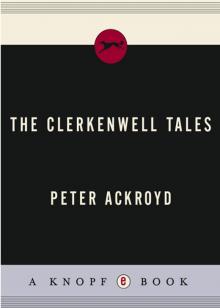 The Clerkenwell Tales
The Clerkenwell Tales The Canterbury Tales
The Canterbury Tales J. M. W. Turner
J. M. W. Turner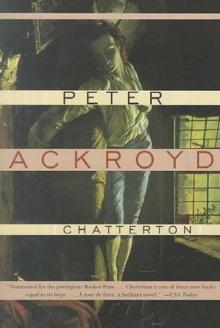 Chatterton
Chatterton The Canterbury Tales – A Retelling
The Canterbury Tales – A Retelling Alfred Hitchcock
Alfred Hitchcock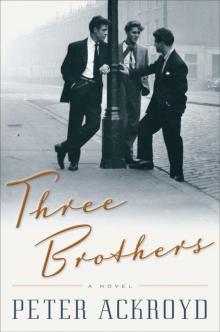 Three Brothers
Three Brothers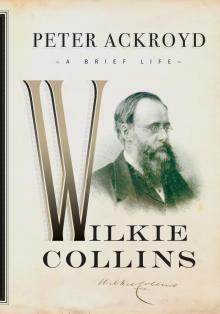 Wilkie Collins
Wilkie Collins Venice
Venice Poe
Poe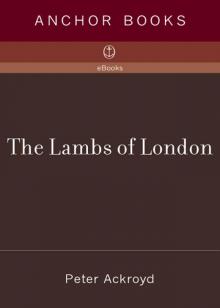 The Lambs of London
The Lambs of London London
London Queer City
Queer City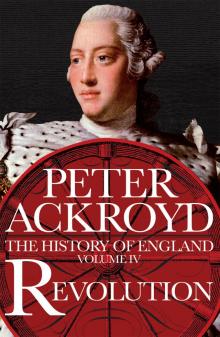 Revolution, a History of England, Volume 4
Revolution, a History of England, Volume 4 Venice: Pure City
Venice: Pure City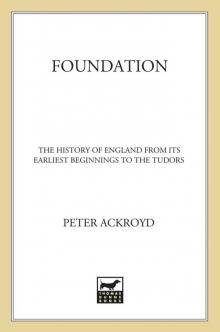 Foundation
Foundation Thames
Thames The Plato Papers
The Plato Papers The house of Doctor Dee
The house of Doctor Dee Rebellion: The History of England from James I to the Glorious Revolution
Rebellion: The History of England from James I to the Glorious Revolution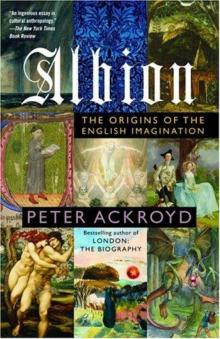 Albion: The Origins of the English Imagination
Albion: The Origins of the English Imagination The Fall of Troy
The Fall of Troy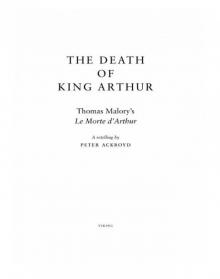 The Death of King Arthur
The Death of King Arthur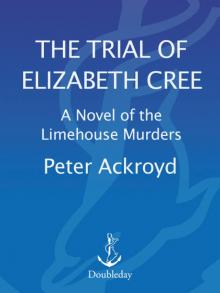 The Trial of Elizabeth Cree
The Trial of Elizabeth Cree London: The Biography
London: The Biography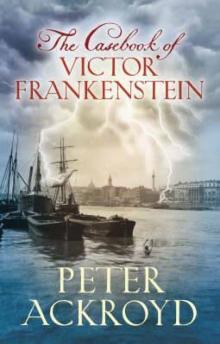 The Casebook of Victor Frankenstein
The Casebook of Victor Frankenstein Hawksmoor
Hawksmoor Charlie Chaplin
Charlie Chaplin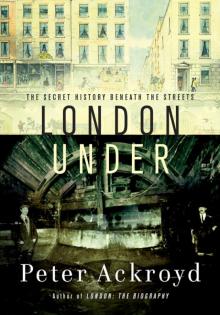 London Under
London Under